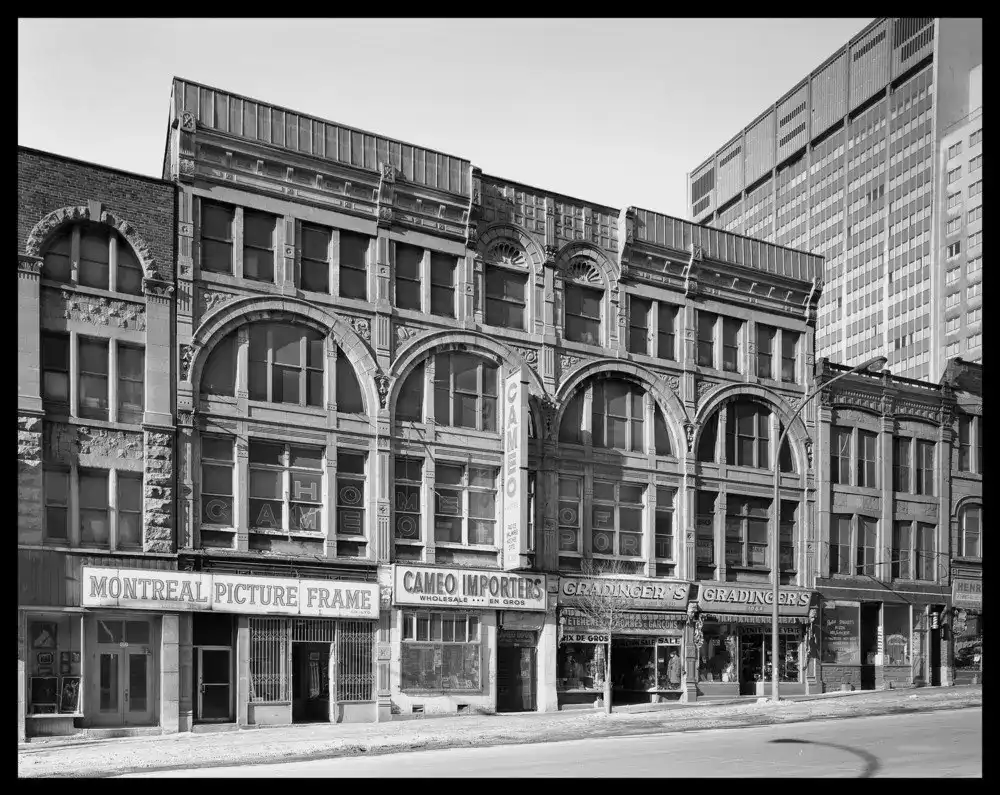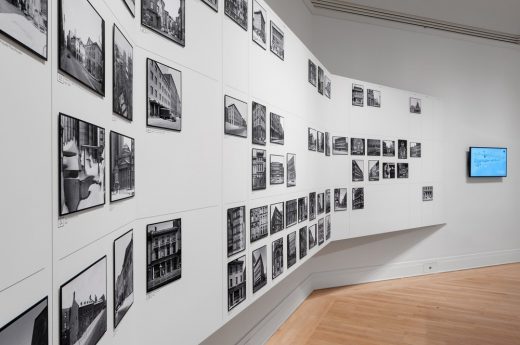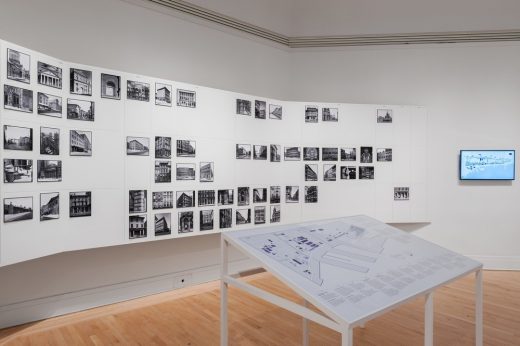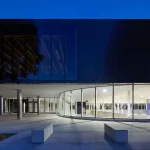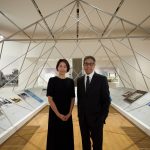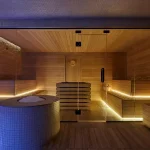Greystone: Tools for Understanding the City Exhibition, Montreal buildings, Architecture show images
Greystone: Tools for Understanding the City Exhibition in Montreal
Architecture Show at the Canadian Centre for Architecture (CCA)
Curated by Phyllis Lambert
Location: 1920, rue Baile H3H 2S6, Montréal, Quebec, Canada
Greystone: Tools for Understanding the City Exhibition in Montreal
Brunet Building, Saint Laurent, 1891. Photograph taken between 1973 and 1974.
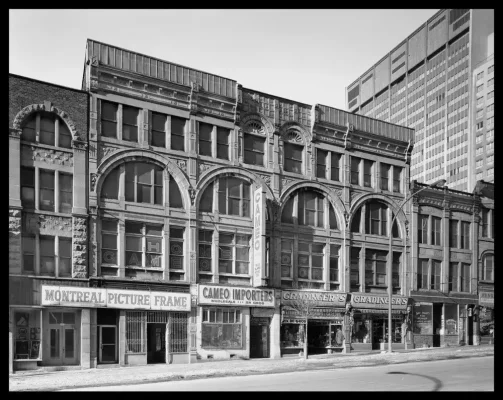
photo : Phyllis Lambert Collection © Phyllis Lambert and Richard Pare
26 Oct 2017
Greystone: Tools for Understanding the City
Until 4 March 2018, the Canadian Centre for Architecture (CCA) presents Greystone: Tools for Understanding the City, an exhibition curated by Phyllis Lambert that reveals her deep attachment to Greystone buildings. This interest gave rise to a vast research project initiated more than forty years ago.
It is an in-depth study of the history of these buildings from the 17th to the beginning of the 20th centuries, through the Greystone photographic series. It reveals the influence of geology, topography, politics, culture, and ethnicity in shaping the city over time.
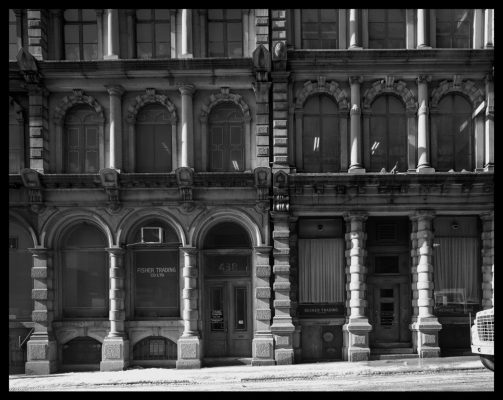
Mills Warehouse II, Old Montreal West, 1864. Photograph taken between 1973 & 1974.
Photo: Phyllis Lambert Collection. © Phyllis Lambert and Richard Pare
Photographic Mission
Conceived as a photographic mission conducted by Phyllis Lambert and Richard Pare through the Montreal neighborhoods from 1973 to 1974, the Greystone photographic series reveals the relationship between city growth, architectural expression, and individuals. Phyllis Lambert explains that this mission, a research approach focused on the visual, became “a catalyst for increased concerns about the conservation of the city’s heritage.
Greystone buildings create a unifying sense across the island of Montreal.” Greystone evokes the scope and demanding aspects of the project: “Early in the morning we trudged through the snow, photographing the neighbourhoods presented in this exhibition: Old Montreal and the original faubourgs directly north of it, as well as other faubourgs and suburban towns on the island of Montreal, as mapped in 1890“.
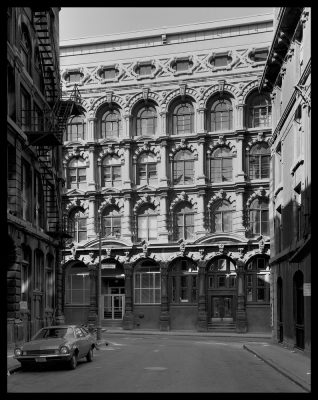
Caverhill Block, Old Montreal West, 1865-1866. Photo taken between 1973 & 1974.
Photograph: Collection Phyllis Lambert © Phyllis Lambert et Richard Pare
Among the possible ways of analyzing city fabric, the focus on a single material of construction provides insight into a wide range of topics. Originally functional, Montreal grey limestone buildings, distinct from those built with other materials, came to hold special symbolic value. In the seventeenth and eighteenth centuries, thick stone walls provided protection against attack, fire, and the cold.
During the 19th-century, Greystone buildings developed from a pragmatic to a symbolic role through successive, layered material transformations, reflecting the changes in politics, trade, cultural identity, society, and human ambition. “This approach would be less productive in cities like Paris or Jerusalem, for example, where all buildings are faced with local stone. However, in Montreal, the North American city with the greatest amount and concentration of stone construction, such focus is revelatory”, underlines Phyllis Lambert.
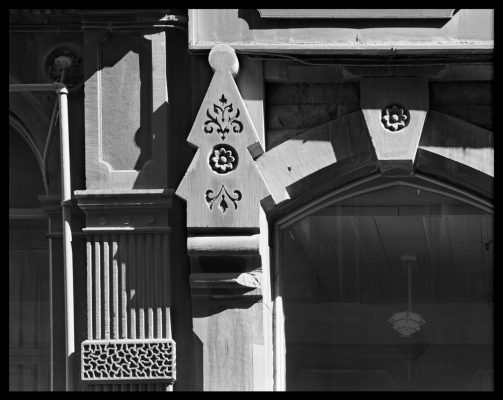
Jodoin Warehouse, Old Montreal Centre, 1872-1873. Picture taken between 1973 and 1974.
Photo: Phyllis Lambert Collection. © Phyllis Lambert and Richard Pare
“Photographs are the protagonists of this exhibition”. Black and white, they are expanded on and complemented by maps that are key to understanding the city, its topography, building dates, architects, owners, and occupants at the time of construction. They explore Old Montreal and the three central neighbourhoods—the former faubourgs of Saint-Laurent, Saint-Louis and Saint-Jacques, which have been the heart of Francophone Montreal for two centuries.
Among the sources of research underlying this study are primary documents that include insurance atlases, historical city maps, cadastral plans, municipal tax assessment rolls, city directories, notarial records and private papers.
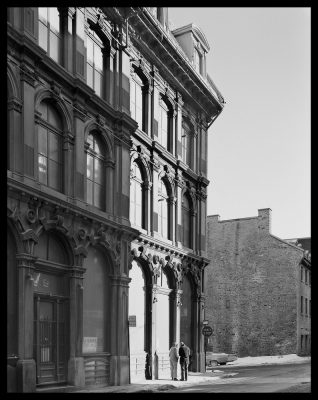
Jodoin Warehouse, Old Montreal Centre, 1872-1873. Photo was taken between 1973 & 1974.
Photo: Phyllis Lambert Collection. © Phyllis Lambert and Richard Pare
The research undertaken and presented in this exhibition permitted constructing a social history of urban change.
Greystone: Tools for Understanding the City is among numerous projects Phyllis Lambert has devoted to heritage in a context of research and museology. In the mid-seventies, the initial study of Greystone buildings was carried out by the Montreal Greystone Building Research Group formed and led by Lambert—before archival research programs on architecture of the city were implemented.
Subsequently the Groupe de recherche sur Montréal established at the CCA. It was at the origin of an important data bank on property and buildings in Montreal at the beginning of the colony, a work in collaboration with Alan Stewart that led to the CCA exhibition and publication entitled Opening the Gates of Eighteenth Century Montreal (1992–1993) which Lambert curated. The exhibition and publication Montreal Metropolis, 1880–1930 (1998), concerning the period during which Montreal was transformed from a 19th-century merchant city to the metropolis of Canada.
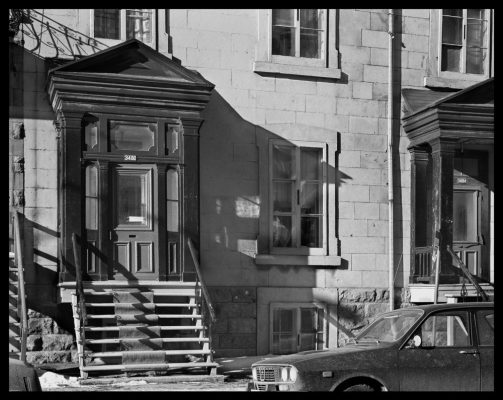
Malo Town houses, Saint Laurent, 1875. Photograph was taken between 1973 and 1974.
Photo: Phyllis Lambert Collection. © Phyllis Lambert and Richard Pare.
Phyllis Lambert
Phyllis Lambert (born January 24, 1927 in Montreal) is an architect, author, scholar, and activist, and is the Founding Director Emeritus and formerly Director and Chair of the Canadian Centre for Architecture (CCA) which she established in Montreal in 1979.
Ms. Lambert first made architectural history as the Director of Planning of the Seagram Building (1954-58) in New York City. Actively engaged in advancing contemporary architecture, as well as the social issues of urban conservation, Lambert founded
Héritage Montréal in 1975 and in 1979 was instrumental in establishing the Société d’Amélioration de Milton-Parc, the largest non-profit cooperative housing renovation project in Canada. In 1996, she formed the Fonds d’Investissement de Montréal (FIM), the only private investment fund in Canada participating in the revitalization of housing in low- and medium-income neighbourhoods.
For 23 years, Ms. Lambert served on the Board of the Vieux Port de Montréal, where she established public consultation as an instrument of planning. Spearheading the revival of Montreal’s downtown west quarter through the round table, she initiated in 2005, Ms. Lambert’s involvement in shaping the city also continues through the Institute of Policy Alternatives of Montreal (IPAM) which she has presided until 2014. For her tenacious engagement in advancing the role of architecture in the public realm, from Seagram to the CCA, Ms. Lambert received the Golden Lion for Lifetime Achievement at the 2014 Venice Architecture Biennale.
In 2016, the Wolf Foundation in Israel bestowed upon Lambert its Wolf Prize in Arts for her six decades of championing innovation in building design and preservation of properties of patrimonial significance, and for invigorating the profession and research into architecture, which she infuses with intellectual doubt and political critique. Last year, she also received the Arnold W. Brunner Memorial Prize 2016 Architecture Award from The American Academy of Arts and Letters in New York.
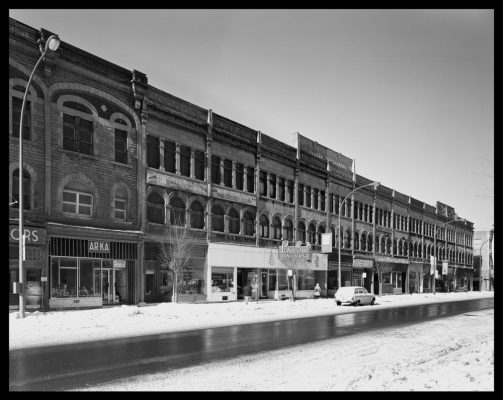
Baxter Block, Saint Laurent, 1892. Photo was taken between 1973 and 1974.
Photograph: Phyllis Lambert Collection. © Phyllis Lambert and Richard Pare
Richard Pare
Richard Pare studied photography and graphic design in Winchester and at Ravensbourne College of Art before moving to the United States in 1971. In 1973, he graduated from the School of the Art Institute of Chicago and since then he has worked as a photographer with a particular affinity for architecture.
His most current project is a photographic monograph of the complete work of Le Corbusier. In 1996 Pare published Tadao Ando, The Colours of Light, which received the AIA monograph award. He was curator of the Seagram photography collection from 1974 until 1985 and the founding curator of the photography collection of the Canadian Centre for Architecture.
His work has been widely exhibited and he is represented in many of the largest public collections of photography. His numerous seminal exhibitions and publications include Court House: A Photographic Document (1978) Photography and Architecture: 1839–1939 (1982), and The Lost Vanguard, Architecture of the Russian Avant-garde 1922–1932.
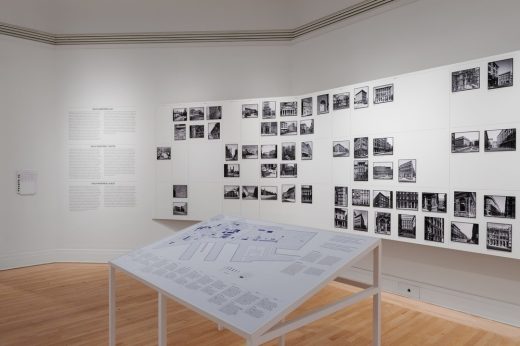
Greystone: Tools for Understanding the City. Installation view, 2017.
Photo: CCA, Montréal
The CCA
The CCA is an international research centre and museum founded by Phyllis Lambert in 1979 on the conviction that architecture is a public concern. Based on its extensive collection, exhibitions, public programs, publications, and research opportunities, the CCA is advancing knowledge, promoting public understanding, and widening thought and debate on architecture, its history, theory, and practice, and its role in society today.
Address: 1920, rue Baile H3H 2S6
Telephone: +1 514-939-7026
Greystone: Tools for Understanding the City Exhibition in Montreal images / information received 261017
Location: 1920, rue Baile H3H 2S6, Montréal, Quebec, Canada
Montréal Architecture Developments
Contemporary Montréal Buildings
Montreal Architectural Designs – chronological list
Architecture Tours Montreal – Quebec architectural tours by e-architect
McGill University Schulich School of Music
Canadian Architectural Designs
Canadian Building Designs – architectural selection below:
Comments / photos for the Greystone: Tools for Understanding the City Exhibition in Montreal page welcome

